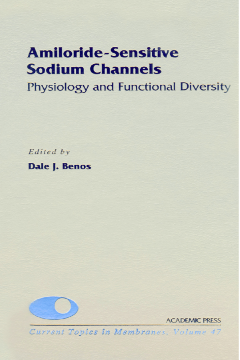
BOOK
Amiloride-Sensitive Sodium Channels: Physiology and Functional Diversity
Douglas M. Fambrough | Dale J. Benos
(1999)
Additional Information
Book Details
Abstract
Sodium reabsorbing epithelia play a major role in whole-body sodium homeostasis. Some examples of sodium regulating tissues include kidney, colon, lung, and sweat ducts. Sodium transport across these membranes is a two-step process: entry through an amiloride-sensitive sodium channel and exit via the ouabain-sensitive sodium/potassium ATPase. The sodium entry channels are the rate-limiting determinant for transport and are regulated by several different hormones. The sodium channels also play a significant role in a number of disease states, like hypertension, edema, drug-induced hyperkalemia, and cystic fibrosis. Amiloride-Sensitive Sodium Channels: Physiology and Functional Diversity provides the first in-depth exchange of ideas concerning these sodium channels, their regulation and involvement in normal and pathophysiological situations.
- Summarizes current state of amiloride-sensitive sodium channel field
- Analyzes structure-function of epithelial sodium channels
- Discusses immunolocalization of epithelial sodium channels
- Examines hormonal regulation of sodium channels
- Discusses sodium channels in lymphocytes, kidney, and lung
- Considers mechanosensitivity of sodium channels
- Provides ideas on sodium channels and disease
